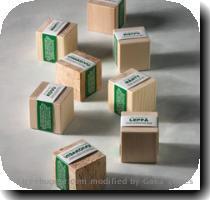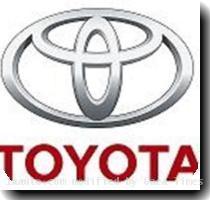Woes at Toyota, JAL, Sony bruise Japan Inc.’s image, reflect pitfalls of global growth
By Malcolm Foster, APSunday, January 31, 2010
Problems at Toyota, JAL taint Japan Inc.’s image
TOKYO — Toyota is the latest Japanese corporate icon making headlines for all the wrong reasons.
News of the automaker’s massive vehicle recalls over faulty gas pedals in the U.S. came just days after Japan Airlines, a once proud flag carrier, filed for bankruptcy, saddled with billions in debt.
Sony has lost its lead in consumer gadgets to the likes of Apple Inc. and has suffered its own quality mishaps. Honda, Japan’s No. 2 automaker, is recalling 646,000 cars worldwide because of a faulty window switch.
Taken together, Japan Inc.’s stellar reputation for quality has taken a hit — just as China is about to overtake it as the world’s No. 2 economy and rising South Korean companies compete ever more aggressively.
What went wrong with the economic giant that arose from the ashes of World War II?
The problems that confront Toyota, Sony and JAL differ, but experts say their struggles have some common themes: the perils of global expansion, a tendency to embrace the status quo, and smugness bred from success or a too-big-to-fail mentality.
“Arrogance and some complacency came into play, driven by the idea that their ranking as No. 1 producer of quality goods wasn’t at risk,” said Kirby Daley, a veteran Tokyo trader who is now chief strategist at Newedge Group, a financial services firm in Hong Kong.
The global economic crisis helped to expose weaknesses, he said. “There was nowhere to hide.”
Added to the mix for Toyota and Sony is intense competition from upstarts in South Korea, China and elsewhere in Asia.
“They can offer products as good as Japanese at much lower cost, even though quality of Japanese products is on the decline,” said Shinichi Ichikawa, chief strategist at investment bank Credit Suisse.
Some new Asian rivals, particularly in electronics, learned their techniques from Japanese operations set up around the region.
Cutting costs to stay competitive while meeting growing demand, Toyota, Sony and others compromised on quality control as they tried to reach ever-larger sales targets, analysts say.
Toyota adopted the practice of using the same part across a range of models — saving vast sums of money but exposing itself to the risk that even a small defect could cause global mayhem for the company.
It also faced difficulties ensuring quality as its global sales expanded rapidly, reaching 8.9 million vehicles in 2008, when it displaced General Motors as the world’s biggest automaker. Experts say its growth outpaced management’s ability to anticipate looming problems.
The result: recalls of more than 7 million vehicles in the U.S., Europe and China for problems with their accelerators and floor mats, and the suspension last week of U.S. sales and production of eight models including the Camry, America’s top-selling car.
It’s a “terrible blow” for Toyota because its identity is so closely linked to quality and the company seemed slow to recognize the problems, said Kenneth Grossberg, a marketing professor at Waseda University who has lived in Japan for 16 years.
“This is the company of zero defects,” he said. “How could such a major fault get past them? It violates their operating principle.”
As far back as March 2007, Toyota started getting reports of gas pedals being slow to rise after being stepped on. Engineers fixed the problem in the Tundra pickup early in 2008, but troubles persisted in other models, eventually leading Toyota to announce massive recalls for the accelerator and floor mats that could trap the gas pedal.
Grossberg said a common problem at Japanese companies is “group think” that makes it hard for an individual to raise a troublesome issue.
“It either falls flat and people ignore it, or it creates a problem for the individual who brings it up,” he said.
Sony started facing problems after it misjudged several critical market trends.
It was slow to predict the switch to LCD televisions and fell behind South Korea’s Samsung Electronics Co., which zoomed ahead to become a market leader.
Content with the success of the Walkman, the portable music player that became a global hit in the 1980s. Sony was slow to jump into digital players. It has been hammered by Apple’s iPod, as well as by cheaper gadgets and consumer electronics from other Asian competitors.
With Sony’s empire sprawling into finance, movies and other businesses, some analysts said the corporation was losing its focus. In 2006, it recalled nearly 10 million laptop batteries after some caught on fire.
The company is still losing money even as CEO Howard Stringer wins praise for taking it back to basics.
At Japan Airlines, problems had festered for decades but were repeatedly papered over because of Japan’s reluctance to let major companies go under.
It became the victim of its own ambitions when risky investments in foreign resorts and hotels went bad after Japan’s property and stock bubble burst in the early 1990s. Bloated pension and payroll costs, as well as a network of unprofitable but politically necessary domestic routes, led to government bailouts.
JAL had a good reputation for comfortable travel, but its lavish running costs had “generally been something of an industry joke,” said Peter Harbison of the Sydney-based Centre for Asia Pacific Aviation.
Quality, too, eventually proved problematic: A spate of safety lapses tarnished JAL’s image, and its rival, All Nippon Airways Co., benefited.
And while filing for bankruptcy with $25.6 billion in debt was an embarrassment, analysts expect JAL to slim down and emerge healthier.
Toyota, too, will bounce back, they say.
“Toyota expanded too rapidly, and that’s always a risk,” said Martin Schulz, an economist at Fujitsu Research Institute. “But they will get this quality problem under control.”
In Japan, reaction to Toyota news has been more muted because the recall doesn’t affect models in the domestic market. Japanese are proud of Toyota’s leading role on the roads, including its move into hybrid and other green vehicles.
So far, the automaker’s sterling reputation is holding up at home, partly because Japanese often assume that Japan-made products are better than those made abroad. Toyota’s Japanese models use a different parts supplier than CTS Corp., the American parts maker rushing to fix the faulty gas pedals.
Still, the blaze of bad publicity has struck at the idea of Japan as a technology powerhouse where companies can be world leaders despite the nation’s deeper problems of an aging population, mounting debt and anemic economic growth.
Toyota must take “urgent measures” to regain consumers’ confidence, the Yomiuri newspaper said in an editorial Sunday.
“For other Japanese automakers and manufacturers, it’s not somebody else’s problem. They should keep in mind that safety and quality make the foundation of public trust in the Japanese way of manufacturing.”
Associated Press writer Mari Yamaguchi contributed to this report.
Tags: Asia, China, Consumer Electronics, East Asia, Greater China, Japan, Lost, North America, Products And Services, South Korea, Tokyo, Travel, United States
|
February 3, 2010: 3:17 am
Using video for marketing your website should be an integral part of any search engine marketing campaign. . Unless you spend thousands of dollars on advertising every month, organic searches will make or break the success of your website. |




Mark Clayson